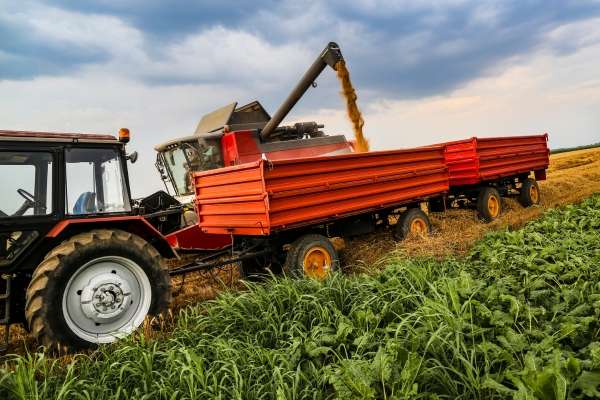100 %

Sep 26,2023
Farming has evolved over the years, and with it, the tools and equipment used to make agricultural tasks more manageable and efficient. The webbing sling is an invaluable tool that has found its place in modern-day agriculture. These durable and flexible straps are more commonly associated with heavy lifting in industries like construction and transportation. However, in the agricultural sector, webbing slings have proven to be a game-changer, streamlining various tasks and optimizing productivity.
In this article, we delve into agriculture and explore the ingenious ways webbing slings are utilized to enhance operations, handle heavy loads, and ensure safety. From livestock handling to crop cultivation, let's uncover the numerous applications of webbing slings in agriculture.
Webbing slings have earned their reputation as a reliable lifting solution, but their utility extends far beyond lifting and rigging in the agricultural realm. Farmers and ranchers have ingeniously adapted these versatile tools to suit their unique needs, improving efficiency and reducing labor-intensive processes.
Gently Lifting Injured Animals: Webbing slings provide a safe and secure way to lift injured livestock, minimizing stress and potential further harm during transportation or treatment.
Supporting Birthing Livestock: When a pregnant animal needs assistance during labor, webbing slings offer a gentle and supportive lift to ensure a smooth delivery process.
Easy Load Adjustments: The adjustable nature of webbing slings allows farmers to handle livestock of varying sizes, providing a custom fit for each animal.
Trellising and Plant Support: Webbing slings support heavy branches and fruit-laden plants, prevent breakage, and enhance yield in orchards and vineyards.
Securing Greenhouses and Shade Cloth: Webbing slings provide a robust fastening solution for securing greenhouse structures and shade cloth, safeguarding crops from harsh weather conditions.
Transporting heavy loads is an essential aspect of agricultural operations. Webbing slings have proven to be a reliable tool for this purpose, simplifying the movement of bulky items around the farm.
Loading Machinery and Implements: Webbing slings facilitate the safe loading and unloading of heavy farm equipment onto trailers or trucks, preventing damage to the machinery and reducing loading time.
Moving Bulk Material: Farmers use webbing slings to move bulk materials such as feed, seeds, or fertilizers, enabling efficient and controlled transfers.
Extracting and Replacing Irrigation Pipes: Webbing slings offer a secure grip for extracting and replacing irrigation pipes, allowing for swift and hassle-free maintenance of irrigation systems.
Ensuring safety in agricultural operations is of utmost importance. Webbing slings play a pivotal role in maintaining a safe working environment on the farm.
Securing Loads on Vehicles: Webbing slings keep loads secure during transportation, preventing shifting or tipping that could endanger drivers and other road users.
Balancing and Leveling: Farmers use webbing slings to balance and level heavy equipment or machinery to minimize the risk of accidents during operation.
Personal Safety Equipment: Webbing slings are used to craft safety harnesses and lanyards, ensuring workers' safety when working at heights or in elevated areas.
Webbing slings have found a well-deserved place in the agricultural sector, proving an indispensable tool for farmers and ranchers. From handling livestock with care to facilitating heavy load transport and ensuring safety during operations, webbing slings have demonstrated their adaptability and reliability in diverse farm applications. As the farming industry evolves, webbing slings will be crucial in driving efficiency, productivity, and safety in agricultural practices.
Remember, when utilizing webbing slings in agriculture, always follow the manufacturer's guidelines and safety protocols to maximize their benefits and ensure long-lasting performance on the farm.
A1. Yes, webbing slings are commonly used for lifting injured or birthing livestock, providing gentle and safe support.
A2. Absolutely! Webbing slings are designed to easily and efficiently handle heavy loads, including farm equipment and machinery.
A3. Yes, webbing slings made from durable materials are resistant to weather conditions, making them suitable for outdoor agricultural tasks.